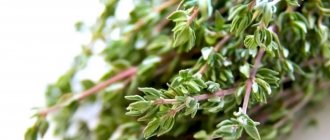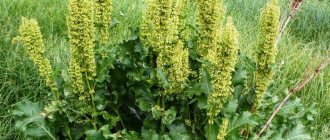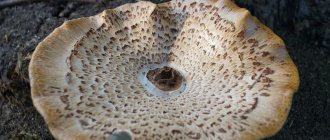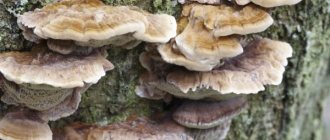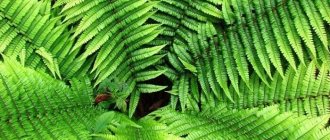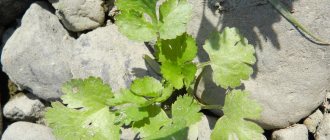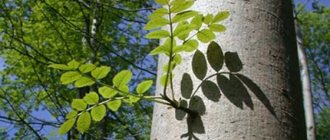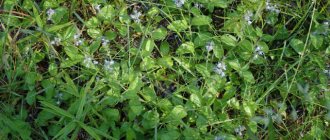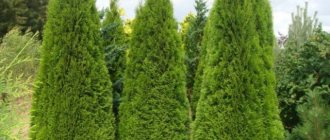About hacienda » Flowers and plants
Flowers and plants
Cold-resistant rhizomatous perennials with inflorescences of various shapes and colors and deeply dissected, often fragrant leaves. All members of the genus need well-drained soil and a sunny location. Some species, such as Tanacetum vulgare (Tansy), are quite aggressive, fast-growing plants that are best grown in wild corners of the garden or in beds with medicinal plants; others, characterized by their compact shape and slow growth, will look great in a rock garden . Most types of tansy are well suited for growing in mixborders.
Tansy 456
Related article:
Several varieties of tansy for your garden: description and properties
Plant species
Tansy balsamic
This variety of plant was grown in ancient Rome, using it both for healing and as a seasoning for various dishes. This plant has fragrant leaves and a creeping rhizome, with the help of which it reproduces. In Russia, housewives use the leaves of this plant when pickling cucumbers.
Tansy curly
It is this flower that is a guest of our gardens and flower beds. It is similar to the common tansy, but is shorter and has curly leaves and a creeping root. It is not picky about the soil and therefore can be planted in any area of the garden.
For the winter, any tansy does not require shelter, as it is frost-resistant. This subspecies of tansy looks beautiful when flowers such as daisies or echinacea are planted at its feet.
Tansy painted
This garden tansy comes from Central Asia. It resembles ordinary daisies in appearance and has many different flower colors from white to purple shades. As it grows, it forms a dense carpet of finely dissected aromatic leaves.
Tansy maiden
It is a perennial plant, growing about 50 cm, with green leaves and a spicy aroma. Flowers with white petals resemble daisies in appearance. This plant lowers temperature and dilates blood vessels.
Recommended species and varieties
G. argenteum (P. silver)
A slow-growing evergreen perennial that forms a carpet of finely dissected silver-gray leaves up to 7.5 cm long. Numerous small white inflorescences with a yellow center, reminiscent of daisies, appear in mid to late summer. The height and diameter of the plant is 20x30 cm.
G. argenteum
Ssp. capit
A subspecies with finely dissected silvery leaves forms dense, low curtains. An ideal plant for rock gardens up to 15 cm high. To ensure that the foliage retains its attractive color, remove any inflorescences that appear.
Subspecies with finely dissected silvery leaves
T. balsamita (P. fragrant, Kanufer)
Tiny bright yellow central flowers surrounded by white outer flowers bloom in late summer. A herbaceous perennial with a strong camphor scent, suitable for growing in apothecary gardens. The leaves are elliptical, medium green, up to 25 cm long, serrated at the edges. This type of tansy was very popular in Russia in the 19th century and was often used to flavor pickles. The height and diameter of the plant is 75x45 cm.
Related article:
Caring for daffodils when they bloom
herbaceous perennial
Ssp. balsamita (syn. var. tanacetoides)
The flowers of the subspecies look like small buttons or buttons (they lack white marginal flowers).
The flowers of the subspecies look like small buttons
Ssp. balsamitoides (syn. tomentosum)
The leaves and stems of the subspecies are covered with dense fibers. The button inflorescences of this plant are yellow.
The leaves and stems of the subspecies are covered with dense hairs
T. cinerariifolium (P. cinerarifolia, Dalmatian chamomile)
Inflorescences with a yellow center and white marginal flowers with a diameter of 2.5-4 cm bloom in mid to late summer. Herbaceous perennial with thin stems and deeply dissected lanceolate grayish-green leaves up to 20 cm long, pubescent below. Dried herbs and decoctions of this tansy were previously used as a folk remedy for garden pests. The height and diameter of the plant is 45x30 cm.
Inflorescences with yellow center
T. coccineum (P. red)
Single flowers with a bright yellow center and white, pink, purple or red marginal flowers crown the tops of strong, straight stems and bloom in late spring and early summer. The diameter of the flowers is up to 7.5 cm. Frost-resistant herbaceous perennial with bright green finely dissected fragrant leaves up to 10 cm long. The height and diameter of the plant is 75x60 cm.
Related article:
Beautiful varieties of lilac
Brenda
The variety produces carmine-pink inflorescences;
Carmine pink inflorescences
Bressingham Red
Bright red inflorescences;
Bright red inflorescences
"James Kelway"
Dark red inflorescences;
Dark red inflorescences
Robinson's Pink
Pink inflorescences;
Robinson's Pink
Robinson's Red
Red inflorescences;
Robinson's Pink
Snow Cloud
White inflorescences;
Snow Cloud
"Eileen May Robinson"
With the exception of the variety, which reaches a height of 75 cm, all listed varieties do not grow above 60 cm.
Eileen May Robinson
T. corymbosum (P. corymbosum)
Groups of 3-15 white inflorescences with a yellow center up to 1 cm in diameter bloom in mid-summer. A herbaceous perennial with strongly dissected gray-green leaves up to 5 cm long with sharp teeth along the edges and straight branched stems. The height and diameter of the plant is 60x45 cm.
Herbaceous perennial with strongly dissected gray-green leaves
T. densum (P. dense, P. thick)
Tiny, daisy-like yellow inflorescences are collected in loose corymbs up to 7.5 cm in diameter and bloom in mid to late summer. Bushy perennial with silvery grayish-green oval leaves up to 5 cm long, forming small sods. In places protected from the cold, leaves on plants remain all year round. The height and diameter of the plant is 30x30 cm.
Related article:
Euphorbia - types, properties, planting, care
Tiny, daisy-like yellow inflorescences
Ssp. amani
The leaves of the subspecies are gray in color and covered with dense hairs. In order for the foliage to retain its silver color, it is necessary to remove the emerging inflorescences. The height of the plant does not exceed 20 cm.
Ssp. amani
T. haradjanii (P. Harajana)
The apical corymbs of small, bright yellow, button-like inflorescences-baskets bloom in late summer. The leaves are silver-gray, wide, lanceolate, strongly dissected, up to 5 cm long. Cold-resistant bushy evergreen perennial, forming small clumps and quite suitable for growing in rock gardens. The height and diameter of the plant is 30x30 cm.
Leaves are silver-gray, wide
G. macrophyllum (P. macrophyllum, Pyrethrum macrophyllum)
Small white inflorescences with a golden yellow tint are collected in dense groups and bloom in mid-summer. A cold-hardy herbaceous perennial, usually grown in wooded areas of the garden. The leaves are lanceolate, cut along the edges with large teeth, up to 20 cm long. The height and diameter of the plant are 90x60 cm.
Related article:
Cumin for your garden: types, description and properties
Small white inflorescences with a golden yellow tint
T. parthenium "Aureum" (syn. Chrysanthemum parthenium) (P. maiden, Pyrethrum maiden, Chrysanthemum maiden)
Single, daisy-like white inflorescences with a golden hue do not exceed 1 cm in diameter and appear throughout the summer. The leaves are oval, deeply dissected, up to 7.5 cm long, bright golden in color. In order for them to retain their attractive color, it is necessary to remove the inflorescences that form. Short-lived bushy perennial. The height and diameter of the plant is 45x30 cm.
"Plenum"
The variety has white, double inflorescences.
"Plenum"
"White Bonnet"
Ivory inflorescences. Height - up to 30 cm.
White Bonnet
T. vulgare (P. vulgaris, Rowan)
A vigorous, fast-growing, fragrant perennial with terminal clusters of small, bright yellow flowers that bloom from late summer to early fall. The leaves are lanceolate, bright green, strongly dissected, with high teeth along the edges, up to 15 cm long, similar to rowan leaves. The most suitable place for this species is a wild corner of the garden; when planted, she behaves very aggressively. The height and diameter of the plant is 1.2 x 0.6 m.
Related article:
Do you want a beautiful garden? Plant astilbe!
Vigorous, fast-growing, aromatic perennial
Var. crispum
The subspecies does not exceed 60 cm in height and produces wrinkled leaves similar to those of a fern.
Var. crispum
"Silver Lac"
The leaves of the variety are decorated with a silvery pattern, which, however, fades over time.
Silver Lac
Plant propagation and care
There is no need to take special care of the plant; just weed it out and water it in dry weather. In the fall, it is fed with fertilizers for more luxuriant growth for the next warm season.
The plant is very resistant to diseases and therefore, if it becomes infected with something, you just need to remove the affected parts of the plant.
The soil
Tansy is absolutely not demanding on the composition of the soil, so its cultivation does not cause any problems for the gardener.
Plant propagation
This beautiful plant has not only healing properties, but also not flashy beauty. So you can plant it in your flowerbed, and it will delight the eye with its yellow flower heads. The flower is propagated in two ways - by dividing the mother bush and by seeds.
- The first method is to dig up a bush in a field or any other place and transfer it to a garden plot with a lump of earth. The only thing is to get rid of the weeds growing in this lump of earth. A lump of earth is lowered into a pre-dug hole 15 cm deep and watered abundantly with water. This whole procedure is done in May before the heat sets in.
- Seeds are sown immediately in open ground in October. And then next spring tansy will grow in this place, delighting with its beauty. This plant blooms in the second year.
Beneficial properties of tansy for women and contraindications for use
Monthly light and short-lived bleeding from the genital tract is a visible confirmation of the absence of pregnancy. Each cycle is a kind of preparation of the woman’s body for a possible pregnancy, and the next failure inevitably leads to the appearance of menstruation, when the mucous membrane lining the uterus, the endometrium, is rejected. The frequency, as well as the nature of bleeding, depends on the individual characteristics of the woman, but the absence of menstruation is not a good symptom, indicating problems in the female reproductive system.
If the absence of menstruation is not a consequence of pregnancy, then a change in the cycle may be due to:
- acclimatization associated with travel or work trips;
- hormonal imbalance, as a result of chronic thyroid diseases or changes in the level of sex hormones;
- taking certain medications;
- stress, depression, excessive physical and psycho-emotional stress.
Tansy with delayed menstruation
In cases where it is impossible to see a doctor, herbalists advise using tansy when menstruation is delayed.
It is necessary to take the decoction extremely carefully and only when menstruation is “late” by 3-5 days. You must first rule out pregnancy by performing a home rapid test for the presence of the hCG hormone in the urine.
Taking the decoction leads to stimulation of uterine contractions, which provokes active rejection of the endometrium, and as a result, menstruation. In ancient times, women used this method to get rid of an unwanted pregnancy in the early stages (up to 10 weeks). Taking tansy decoction as an abortifacient is fraught with incomplete miscarriage (possible sepsis), endometritis (inflammation of the endometrium of the uterus), and uterine bleeding. In addition to the fact that the herb stimulates active contraction of the muscles of the uterus and leads to rejection of the fertilized egg in case of pregnancy, the substance thujone present in tansy in high concentrations has a toxic effect on the fetus, and this can lead to a variety of malformations and deformities.
At the same time, the medicinal properties of tansy are used in gynecology to normalize the menstrual cycle, with severe blood loss, and to prevent the manifestations of PMS. In particular, the decoction is recommended for women suffering from regular migraine attacks on the eve of menstruation.
Along with its medicinal properties, tansy also has contraindications for women, these are:
- pregnancy;
- hypertension;
- endocrine diseases;
- heart problems;
- allergic reactions to the active substances of the plant;
- cholelithiasis.
In general, taking tansy decoction has a beneficial effect on a woman’s health, because it gently restores hormonal balance and actually stimulates the appearance of menstruation literally 5-10 hours after the first cup of herbal tea.
Tansy beneficial properties
Even in the times of Ancient Rus', people used this plant to preserve meat, since the herb has properties that block the growth of bacteria. Green dye is made from the roots of the plant.
The plant, dried and ground into dust, is used by people against mosquitoes and fleas. The leaves are used in gastronomy; they give various dishes a specific spicy aroma.
Tansy is also used in the treatment of such diseases:
- Hypertensive crises.
- Hepatitis.
- Cholecystitis.
- Gastritis with low acidity.
- Stomach ulcer.
- Rheumatism.
- Headache.
- Purulent wounds.
This is an invaluable plant, because the poison contained in its juice kills parasites in the human body, the oil squeezed from the plant has a beneficial effect on the bile tract. The acids contained in the oil help in the secretion of bile and its normalization.
Tansy - beneficial properties
With skin lesions and festering wounds, tannins found in tansy are very helpful. This plant is used for inflammatory skin processes, and with the help of various acids it fights skin aging. Thanks to these properties, it is used in cosmetology.
Since tansy contains many biologically active substances, it is often used to treat various diseases. For treatment, the vegetative green mass of the plant and its flowers are used.
Features of tansy
Stephanotis houseplant
The height of the tansy bush varies from 0.5 to 1.5 m. The woody long rhizome is creeping and branching. There are many straight shoots; they are branched and faceted in the upper part, and their surface is slightly pubescent or bare. The twice pinnately dissected alternately arranged leaf plates have an oblong-ovate shape. They consist of from 5 to 12 pairs of oblong-lanceolate leaves, pointed, serrated or entire along the edge. Their front surface is dark green, while the back surface is covered with dots and glands. Lush flat apical corymbose inflorescences consist of baskets, which in turn include small yellow tubular bisexual flowers. Flowering occurs in July–September. The fruit is an elongated pentagonal achene.
Application of tansy
We must always remember that this is a poisonous plant that can poison the human body. Therefore, decoctions are prepared and taken only after examination by a doctor.
Tincture
To make an infusion, you need 5 grams of tansy inflorescences. pour 200 gr. boiling water and let it brew until the tincture has cooled completely. Then strain and store in the refrigerator so that it does not spoil. This tincture can be used to rid the human body of parasites.
If it is necessary to treat purulent wounds, this tincture is diluted with cooled boiled water one to one. This is done immediately before washing the wounds on the body.
Tansy decoction
A decoction is made to wash wounds, but you must first do a test on a healthy area of skin to see if the person is allergic to this herb. To prepare the decoction, take the same 5 grams. herbs, but add 500 gr. water, bring to a boil and allow to cool, after which all this should be strained and stored in the refrigerator.
The drug “Tanacin” is made from this medicinal plant, which is used in the treatment of biliary diseases.
Extracts from tansy are also components of various drugs that are used in the treatment of bronchial asthma, constipation and rheumatism.
Tansy in the treatment of rheumatism
Two tablespoons of the plant are poured into 500 g. fortified wine and let it brew for a week. After this, the tincture is consumed in 50 g doses. after meals three times a day.
Tansy in the fight against bedbugs and fleas
The plant is simply laid out throughout the room, and the insects leave it, unable to bear the aroma of the plant.
Syrup for the treatment of liver damaged by alcohol
Two glasses of dried yarrow and tansy flowers are poured with two liters of water. Let stand for 24 hours, and then put on fire, after boiling, cook for 10 minutes and let brew for about 4 hours.
Put 4 tablespoons of honey and 600 grams into the prepared broth. sugar - mix everything well and simmer over low heat, skimming off the foam, like with jam. Store the syrup in a cool place and take it twice a day, morning and evening, 25 grams.
Overdose
If you prepare decoctions without a doctor’s prescription, you can get an overdose by consuming it. It will also lead to poisoning of the body. Children should absolutely not take it; pets who try the decoction or consume hay with this herb will become severely poisoned.
Some people, wanting a quick cure, increase the dose of the decoction or its concentration, or change the frequency of administration, drinking the daily dose at a time - all this leads to serious consequences. Because the daily dose is only 250 grams. per day and divided into several doses, according to the doctor’s prescription. And you can’t change it yourself.
Magnolia is where all the fun is.
The toxicity of the plant is also transmitted through homemade milk, so before preparing food from homemade milk for a small child, you should taste it. If it is bitter, this means that it contains a lot of toxins and the child can be poisoned by such food.
Symptoms of plant poisoning appear after two or three hours, depending on the person’s body weight.
Symptoms:
- Nausea.
- Vomit.
- Diarrhea.
- Severe pain in the stomach.
Dizziness and headache also appear. In this case, you should immediately rinse your stomach, take activated charcoal and call an ambulance, rather than try to cope with the poisoning yourself.
Some patients have experienced deaths after long-term overdose, as well as allergies to this plant. Because when Quincke's edema occurs, after some time the patient suffocates.
Restrictions for taking the plant:
- children under 14 years of age;
- pregnancy (threat of miscarriage);
- nervous system disease;
- for diseases of the retina;
- patients with heart disease;
- patients with allergic reactions to grass.
The most important thing is to remember and under no circumstances should pregnant women use it. If a woman decides to terminate her pregnancy with the help of this plant, then she should know that this is almost certain death for her. Since a miscarriage does not occur, only the child dies and, decomposing, causes blood poisoning, from which the woman dies.
But if you use decoctions and powders from this plant as prescribed by a doctor, then this plant will help get rid of many diseases.
Collection and preservation of plants
Plant collection begins in mid-summer. Only mostly inflorescences are collected; they should be yellow in color, but as soon as they turn dark, collecting them is strictly prohibited.
Drying is done at high temperature, after which it is placed in cardboard boxes or glass jars, and the year the plant was collected is signed. It can be stored for no longer than one year in sealed packaging. Read about beautiful flower beds here.
Tansy beneficial properties
Tansy - folk remedies
Folk recipes based on tansy
In Russian folk medicine, various decoctions are often used that are effective for joint pain or migraines:
pour 20 grams of crushed medicinal raw material from tansy with a glass of boiling water. Then you need to boil over low heat for about ten minutes. Then strain. Drink chilled to room temperature. Take half an hour before meals, three to four times a day.
Tansy decoctions used for the prevention of colitis, gastritis and high blood pressure:
- pour a tablespoon of tansy with one glass of boiling water and boil over low heat for at least five minutes. The resulting broth must be filtered. Take 100 ml three times a day, preferably on an empty stomach before meals.
Tansy is also taken as a dry powder to prevent parasites and worms. The recipe is extremely simple. Grind the dried flowers and mix with honey. Take three grams two to three times a day.
Tansy: beneficial properties and contraindications for men
Treatment with this plant has a number of serious contraindications. The most important of them is that an overdose of this plant or products from it can result in death, or death, in other words. There may be poisoning and even depression caused by large amounts or prolonged use of this medicinal plant
Men need to be especially careful when dosing such treatment, since the reaction of the male body can be very individual. The beneficial properties are expressed in this case precisely by the fact that the plant cures diseases characteristic of men such as cholecystitis, stomach ulcers and duodenal ulcers.
Tansy: beneficial properties and contraindications for women
The female body, despite its increased endurance, has always been considered more fragile. For women, we can especially emphasize the use of tansy preparations and products in cosmetology. This type of cosmetics is especially suitable for those over thirty. The unique property of tansy to rejuvenate the entire body, as well as the skin, which has already significantly withered or become flabby, is very popular with women, but in this case it is impossible to overdo it with the recipe, it is dangerous.
Tansy should not be used to intentionally induce menstruation. It is very dangerous. Possible death from acute bleeding. You should definitely consult your doctor
Attention! Under no circumstances should tansy and preparations made from it be used by pregnant or lactating women!
Tansy: beneficial properties and contraindications for children
For children, this medicinal plant is most often used to combat worms and other parasites. This allows you to avoid the use of drugs and preparations containing large amounts of chemicals. In other cases, it is better not to use tansy for treating children. It is impossible to predict in advance how the child’s body will behave in a particular case.
And since tansy contains toxic substances, parents and their child should consult a pediatrician to determine the advisability of such treatment. It is impossible to allow a small child to have access to tansy in any form. It is very dangerous.
Tansy: how to take?
Tansy is a very valuable medicinal plant. It has a number of unique properties. But at the same time, using tansy on your own, without prior consultation at the clinic, is completely unacceptable. Only a doctor has the right to prescribe tansy treatment. In this case, you can be absolutely sure that there will be no overdose of dangerous substances and you can hope to achieve excellent results in treatment. You can take tansy-based medications based on what prescription and dosage regimen your doctor specifies. There is no need to self-medicate, especially when internal medication is required.
| Next > |
Tansy photo gallery
- Cineraria - smoky beauty
- Phytophthora of tomatoes: signs and methods of control
- Do-it-yourself swing for a summer house
- Whitefly - pest control in the garden
- Early spring flowers in the garden
- How to get rid of ants - all methods of control
- Rose diseases and their treatment
- DIY crafts from plastic bottles for the garden and cottage
- DIY country veranda
- Lobelia - planting and care
- Photos of beautiful flowers
- How to get rid of spider mites on an orchid
What tansy looks like, photo of the plant
Despite the value that tansy represents, not everyone knows what this wonderful plant looks like. Often people simply pass by this source of useful substances, not even suspecting that they can stock up on raw materials for a long time, which will help with many ailments.
It will help you understand what tansy looks like, a photo that shows a worthy representative of the plant family. Outwardly, there is nothing remarkable about it - a low herbaceous shrub, rarely exceeding 40 cm in height, with small yellow inflorescences that appear in July. Flowering ends with the appearance of fruits - small achenes up to 2 cm long.
The leaves are beautiful, light green, may have short fluff, but are usually smooth. Most often, it is the leaves that are collected for medicinal purposes, but if an effect on a serious disease is required, it is better to stock up on flowers - they contain a high concentration of useful substances.
We recommend reading: Three-leaf watch - medicinal properties, contraindications, application
Tansy care
Caring for this herbaceous plant is very simple. So, he needs to ensure timely watering, loosening the soil surface around the bushes and weeding.
At the beginning of the spring, and even after tansy has faded, it will need feeding. For this, superphosphate and ammonium nitrate are used (20 grams and 10–15 grams per 1 square meter, respectively).
A plant grown from seed begins to bloom only in the second year of growth. This crop is characterized by extremely high resistance to diseases and pests. If any changes were noticed on the sheet plates, then they will need to be cut off and that’s it.

